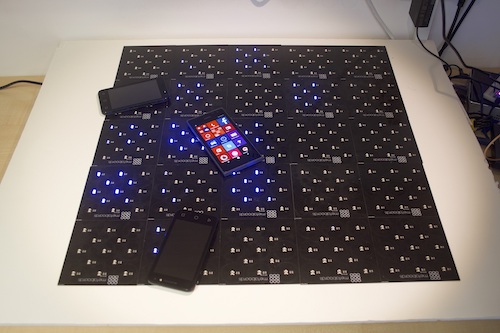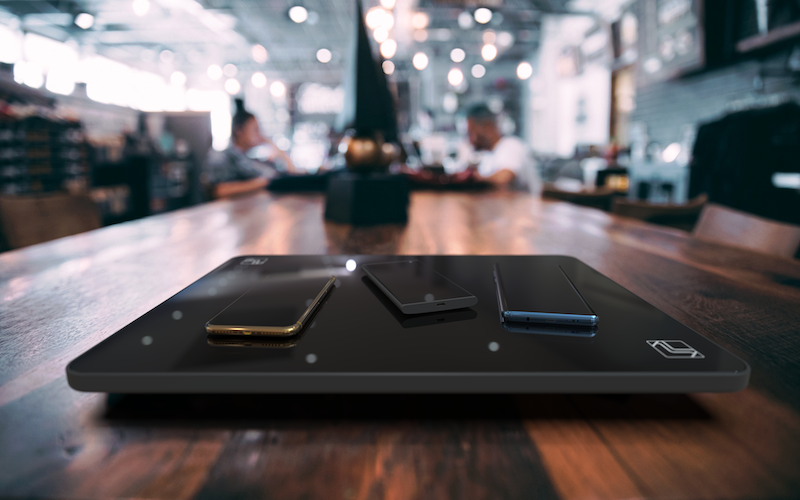With the Creation of Metamaterials, Metaboards Aims to Change the Way People Power Their Devices
Imagine tossing your briefcase onto the kitchen table and in an instant every device inside begins to charge. Your laptop, smartphone, and tablet are seamlessly connected to power, just as your smartphone seamlessly connected to Wi-Fi when you walked in the door. This is the vision of Metaboards, an innovative tech startup from Oxford focused on cutting consumer dependence on wires. With the creation of “metamaterials,” Metaboards aims to change the way people power their devices.

The company is creating accessible, intuitive charging surfaces that may one day replace the need for outlets and plugs. CEO Nedko Ivanov envisions a future in which walls, floors, and workstations provide wireless power for any device, eliminating the need for messy wires and practically erasing the notion of a dead battery. If wireless charging and power are the wave of the future, why haven’t consumers been more responsive to adopting the technology?
Why Aren’t More People Using Metamaterials to Charge Their Devices?
Wireless charging has been, up to this point, a one-way street. A wireless charger, often resembling a coaster, can charge one singular device and can only do so if the device is positioned in exact alignment with the charging surface. The result is only slightly less work than plugging in a USB-C or Lightning connector. Ivanov elaborated on the point:
“Current wireless charging applications are pretty much a one-to-one relationship between a charger and a smartphone,” he said. “Despite the fact that they have wireless charging capabilities in their phones, fewer than 30 percent of people with these capabilities are actually using it.”
If wireless charging were as easy as setting something down, everyone would be doing it. No more frayed cables or worn out charging ports; just toss the device on a charging surface and forget about it. Consumers would be even more inclined to use the tech were they able to charge multiple devices at once. That’s where metamaterials come into play. These materials allow integrators to design custom furniture, walls, or even flooring capable of charging multiple devices simultaneously.
How Metamaterials Will Streamline the User Experience

“What I could envision is a very similar user experience to what we have with wireless data today or wireless connectivity to Wi-Fi,” Ivanov offered. “You could have your device charge on any charging-enabled surface without worrying about how many devices are being charged. You’re going to have your smart desk where your monitor will be charged without a cable – your phone will be charged, your mouse will be charged, your keyboard, etc. You could have wireless speakers powered by metamaterials in the floors that are also powering your kettle or your coffee machine.” Currently, Metaboards is focused largely on wireless charging, but their vision for the future includes wireless power capabilities as well.
Metamaterials may also make wireless data sharing more common. The materials could one day wirelessly transmit data across multiple devices, eliminating the need for networked spaces, flash drives, and all variety of wired data transmission devices. Again, this ability is further down the line for Metaboards, but the scope of this company’s vision is impressive.
The Future of Metamaterials
Were metamaterials able to deliver on every aspect of their vision, the smart homes and offices of the future may look very different than they do today. One might have a workspace free of cables. One could swipe data from their smartphone to a coworker’s wirelessly-charged laptop, who could then send that data to a wireless printer. The data could also be sent to a wirelessly powered monitor for the afternoon meeting, during which everyone will have their phones charging wirelessly while… well, you get the idea. It’s a different world than we know today, but one that isn’t that hard to imagine, particularly when looking at how far wireless capabilities have come in just the past 20 years.
“We are going to see the technology take off similarly to what we witnessed in the past with Wi-Fi,” Ivanov conjectured. “We initially used modems for internet connections. You had to have a one-to-one device relationship between your computer and the modem, then there was a certain procedure to dial-in, and even then it didn’t always connect. Today, with Wi-Fi, once you enter the password, everybody seamlessly connects in the area. This is why Wi-Fi technology has taken off, and this is what is missing for wireless charging to become a widely adopted technology.”
Ultimately, Metaboards may change the way smart homes and offices are designed. With metamaterials incorporated throughout the design and planning phase, entire buildings could be equipped for wireless power, wireless charging, and wireless sharing. As more devices become wireless-charging equipped, the utility of Metaboard’s designs will continue to grow, and hopefully, so will consumer interest in the technology.









